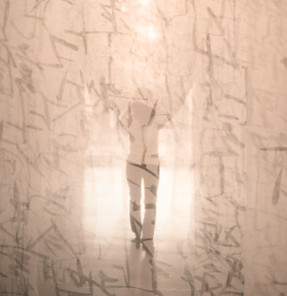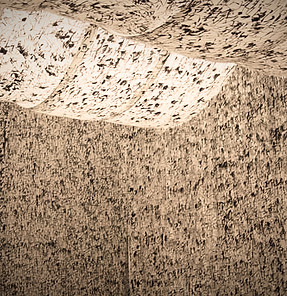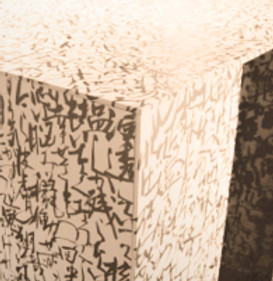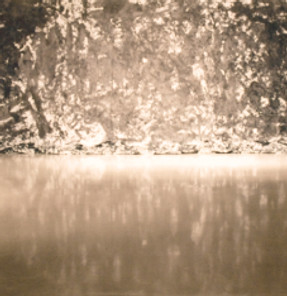
HOME > Calligraphy > Installation Artworks
Installation Artworks
Characters delineate space.
Once placed in space, characters transcend meaning and become landscape.
Calligraphy shifts from something to be read to something to be felt.
Installation works are an experimental series that employ the entire space as their support, releasing the lines of calligraphy beyond the confines of the page. Through the use of translucent fabrics and light, they explore the interplay between visibility and invisibility, presence and absence, opening up new possibilities for expression. Beginning with the seminal work Crowded 1/3, the series has since developed into further iterations and international presentations, greatly expanding the relationship between calligraphy and space.
Installation Artworks — Signature Works
A seminal work that most concisely embodies the series’ concept and served as the foundation for subsequent variations and international presentations.
Crowded 1/3
Intersection of Space and Text.
Crowded 1/3 is a representative installation work of the series. By inscribing characters onto thin silk organza, it explores the relationship between visibility and invisibility, opening new possibilities for releasing calligraphic lines into space.
Outline
Filling Space with Text.
Outline is a large-scale installation that covered an entire room of the Kyoto Municipal Museum of Art with calligraphic characters. Using a unique sequence of invented language, the work transformed the space into a sea of text, standing as one of the artist’s representative works.
Original Series — Crowd Series
Crowd Series
This series, first presented in Kyoto in 2005, consists of a trilogy that stands as an early representative work in the artist’s career.
The gaze converges; existence resides solely here.
With “the crowd” as its central theme, the trilogy unfolded as follows: the first exhibition filled the entire space with writing to present the overwhelming image of the collective; the second dismantled this whole and reconfigured it into countless smaller works; the third enveloped cubic forms scaled to the artist’s body with writing both inside and out.
Through this progression—from the whole to the individual, and from the individual to the self—the series became a pivotal starting point for re-examining existence and relationality.
Crowded Series
This series, presented in 2006 as a tetralogy, was a significant project in which the artist’s early explorations expanded into a connected sequence of works.
What is Seen Between the Visible and the Invisible.
Through translucent fabrics, monochrome writing, and the play of light and shadow, the works re-examine the boundaries between visibility and invisibility, presence and absence. Beginning with the representative work Crowded 1/3, the series extended to Crowded 1/3 high, Crowded 2/3, and Crowded 3/3, greatly expanding the attempt to release calligraphic lines into space.



